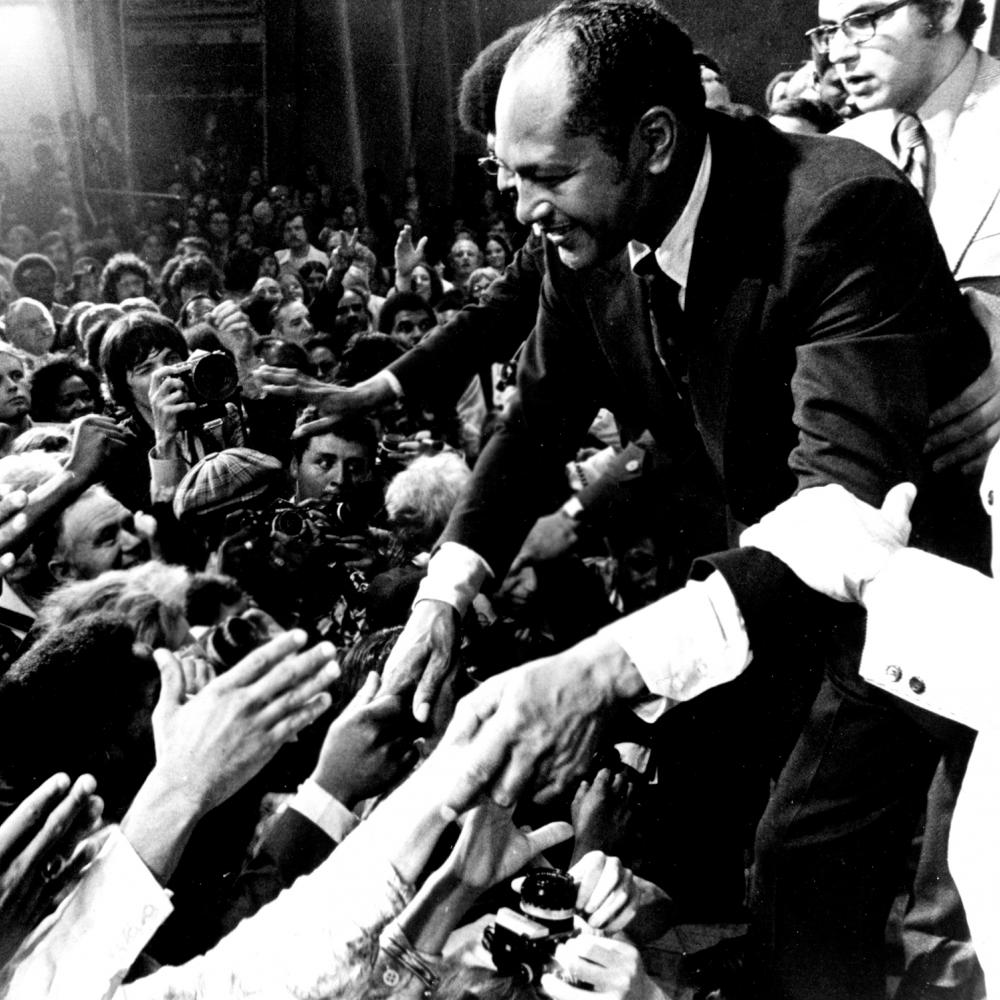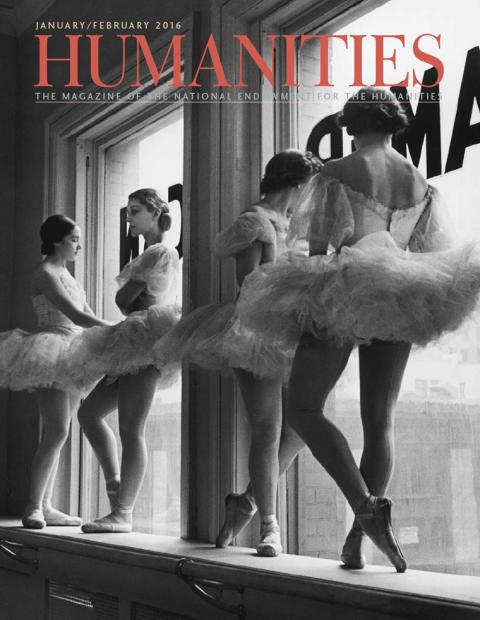“I must say, I never expected it to stoop this low,” says Tom Bradley. He’s sitting behind a desk, looking more composed than alarmed, in footage from 1969, the first year he campaigned to be Los Angeles’s mayor. He’s talking about his opponent, Mayor Sam Yorty, who was running a campaign of smear and fear-mongering.
In the new documentary supported by Cal Humanities, Bridging the Divide: Tom Bradley and the Politics of Race, we also see footage of Yorty in a cowboy hat, barbequing and spouting conspiratorial ideas with a grave expression. A reporter asks him, “Do you believe there’s a power combine of black militants, white radicals, and communists manipulating Bradley’s campaign?” Yorty replies, “I don’t believe it. I know it.”
Bradley ended up losing to Yorty, but then prevailed four years later in a rematch, supported by a multiracial coalition similar to the one that elected Barack Obama. He stayed at the city’s helm for the next two decades.
In retrospect, Yorty’s attitude seems bafflingly alarmist, especially as Bradley’s politics were always relatively moderate (he would describe himself as socially liberal, fiscally conservative). But L.A. had just weathered the Watts race riots, and the only other major American city to have elected an African-American mayor was Cleveland, a city roughly one quarter the size of L.A., in 1967.
When Lyn Goldfarb and Alison Sotomayor, coproducers of Bridging the Divide, began working on research for the film in 2007, they found a surprising dearth of information. “We quickly realized there was not even a full biography,” says Goldfarb. UCLA had a collection of Bradley’s papers, and the public library had only a few books and documents, a disproportionately small number given Bradley’s long presence in city politics.
Sotomayor says, “The Bradley legacy—it was a story that had been distorted and forgotten.” People knew about the “Bradley effect,” a term that caught on after Bradley lost the gubernatorial race in 1982, in which a majority of voters told pollsters they would support the African-American candidate but then voted for the white candidate instead. Few, however, knew about Bradley’s actual career.
The son of sharecroppers, Bradley was seven when his family moved to Los Angeles. He enrolled at UCLA in 1937, but left to join the Los Angeles Police Department before he graduated (later, he would return to school for a law degree). According to his peers, he was a good cop who rarely used force. He progressed to lieutenant, then captain, overseeing white colleagues. “The more blacks we got in the department, we could begin to bring change about,” says Felix Bell in Bridging the Divide. Bell worked with Bradley in the LAPD and saw a rise in black officers as the entire force grew after World War II.
Goldfarb and Sotomayor sought out aging colleagues or acquaintances of the late mayor. Sometimes they weren’t fast enough. Former police chief Daryl Gates died before they could schedule an interview; so did Ethyl Bradley, Bradley’s wife. Still, they conducted 135 on-camera interviews.
No one scholar had done work focused solely on Bradley, so the filmmakers assembled a group of scholars that could speak to different aspects of his tenure and to issues such as police brutality or race in politics.
The story they tell in their documentary is largely about Bradley’s navigation of racial divisions. Archival footage shows him campaigning, surrounded by African-American, Asian-American, and white supporters. In 1973, he defeated Yorty in a landslide, commanding the majority of the white vote. Bradley called the win an “impossible dream.”
The fight didn’t end. The mayor championed public transportation, brought the Olympics to L.A. in 1984, contended with budget cuts, but also, always, grappled with race. In Bradley’s second term, Gates became police chief and Bradley’s adversary. His police force was notorious for targeting minority neighborhoods and, at one point, Gates said that anatomical differences in African-American men had led to a disproportionate number of them dying while in police chokeholds.
The documentary underscores that Bradley’s position at the helm of a segregated city was one step toward progress, but by no means a solution. The Rodney King incident happened near the end of Bradley’s long mayoral run, after the release of a video showing several policemen brutally beating King, an African-American man. “The chief has only one choice: he must step aside,” says Bradley on camera, after a review of Gates’s police force confirmed routine use of excessive force.
Gates did not resign. The police officers who beat King were acquitted. Buildings in South L.A. burned for days. People who knew the mayor remember the pain in his eyes. “I think it sucked a lot of his life out of him,” says Bobby Adams, Bradley’s chief of security during the 1992 riots. “A city that he loved so much, that he dedicated his time to serving. And here he is, watching it burn.”
Bradley pushed through one last reform, limiting the terms of police chiefs, and then, after twenty years in office, passed the torch. “Others should now have the opportunity and the responsibility to bring their visions to bear,” he says at a press conference shown in Bridging the Divide. Bradley died in 1998 at the age of 80, having helped reshape the national conversation on race and politics.
*This article was corrected to say that Tom Bradley was not the first African American elected mayor of a major American city, but, in fact, the second after Carl Stokes was elected mayor of Cleveland in 1967.


